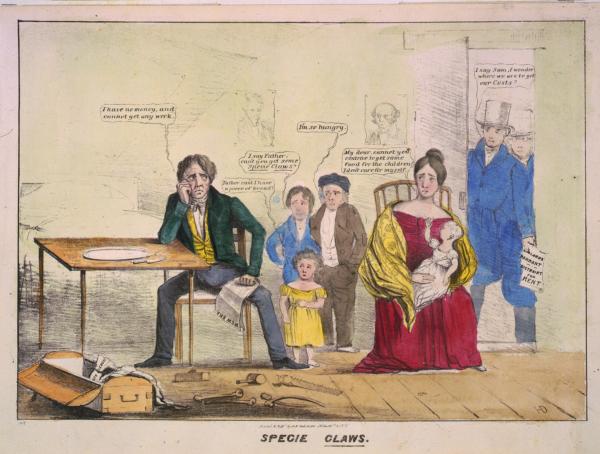
Image

“Specie Claws,” New York: Printed & pub. by H. R. Robinson, 1838.
Credit: Library of Congress
The Depression of 1837, like other economic downswings in the 1800s, had a devastating impact on many working class families. In this popular lithograph, the artist blames the plight of an out-of-work tradesman and his family on the financial policies of President Martin Van Buren.



